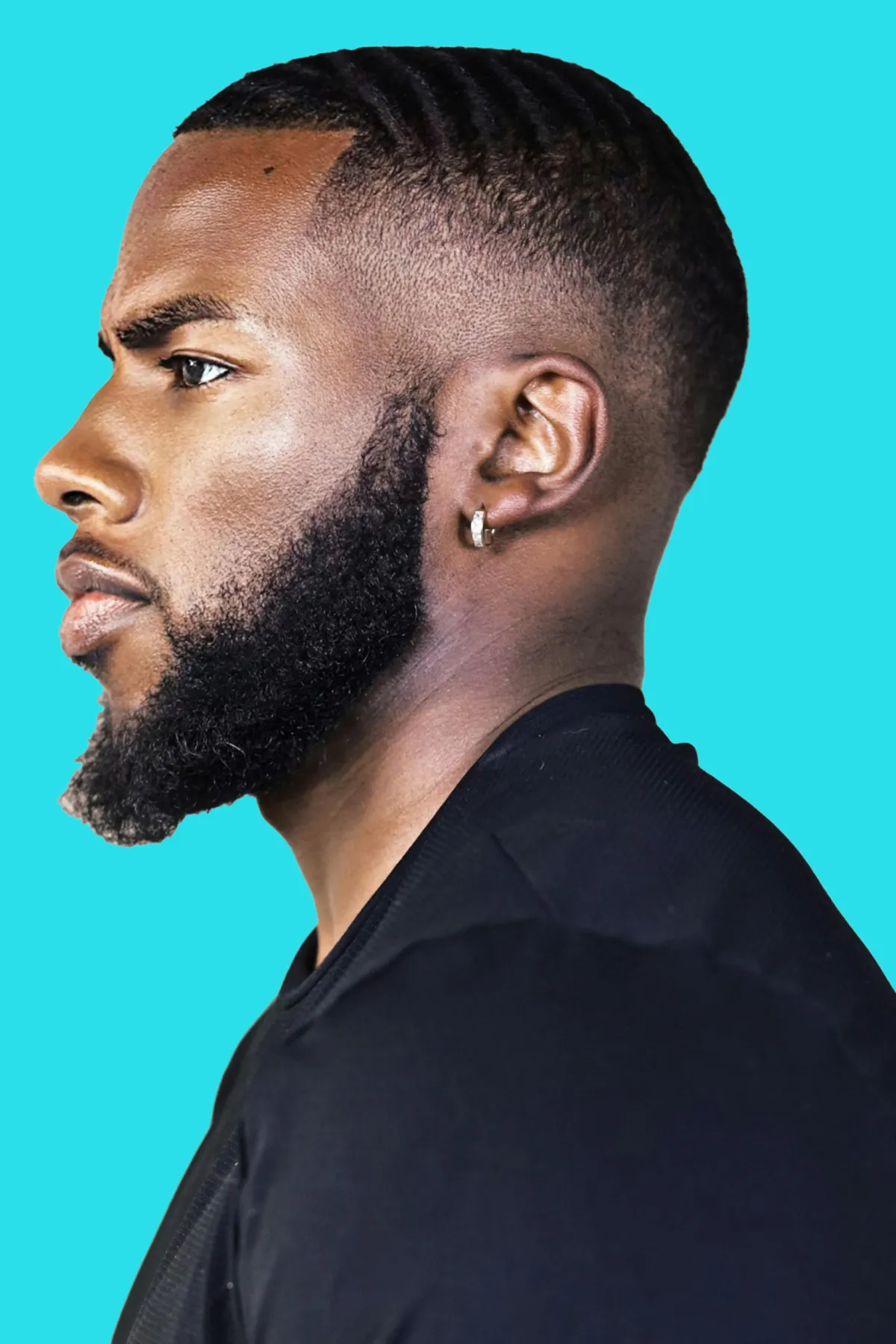
How to Soften Facial Hair: The Complete Beard Care Guide
How to Soften Facial Hair: The Complete Beard Care Guide
Fellas, let’s keep it real — rough, wiry facial hair ain’t the look. A soft beard doesn’t just feel better, it looks more intentional, more grown-man polished. But if your beard feels more like Brillo pads than velvet, don’t trip. The fix isn’t complicated — it’s care. Let’s break down why facial hair gets rough, what actually works to soften it, and how you can build a routine that keeps your beard smooth, strong, and healthy. Always remember if your routine is not working it is time to switch your products up.
Why Facial Hair Gets Rough in the First Place
Facial hair is different from the hair on your head. It’s coarser, curlier, and drier by nature. Here’s why:
Less oil distribution — Sebaceous glands on your face produce oil, but thick beard hair blocks even coverage, leaving ends dry.
Curly texture — Curved follicles = coarser strands that feel wiry.
Environmental stress — Sun, cold, and washing with harsh soaps strip natural oils. Extreme cold and dry weather= dry skin and hair
Neglect — Skipping conditioner, trimming, and hydration keeps your beard feeling like sandpaper. Have a consistent routine if you want your beard to grow. Keep reading for tips from the pros.
Step 1: Wash the Right Way
The first move to softer facial hair is cleansing — but not with regular shampoo or bar soap. Those strip away too much oil, leaving your beard brittle. Instead, use a beard wash or gentle sulfate-free cleanser a few times a week. This clears dirt, sweat, and buildup without leaving your beard thirsty.
Pro tip: Over-washing = dryness. Stick to 2–3 washes a week, rinse with a conditioning mask in between. If you are active you may need to wash more.
Step 2: Condition Like You Mean It
Conditioning is where the softness happens. A rinse-out beard conditioner hydrates after washing, while a leave-in beard conditioner locks in moisture for the long haul.
Rinse-out: Apply after washing, let it sit 4–3 minutes, rinse. For masks, 10 minutes will help when you have the time. (Pro tip: For extra dry beards)
Leave-in: Apply to damp beard, comb through, and let it stay.
Conditioners work by smoothing the cuticle, reducing friction, and restoring moisture. The result? Less tangling, less frizz, and a beard that actually feels good when someone touches it.
Step 3: Use Beard Oil (But Don’t Stop There)
Beard oil hydrates skin underneath and adds shine, but it’s not a substitute for conditioner. Think of it like lotion for your face and beard — it nourishes, but it doesn’t soften hair structure the way conditioner does. Use both for maximum results.
Best oils for softness: jojoba, argan, almond, and coconut oil.
Step 4: Add a Beard Balm or Butter
If your beard needs extra weight to tame frizz, balms and butters are the move. They soften by coating the hair, locking in moisture, and giving a light hold. Shea butter and cocoa butter are especially good for coarse, curly facial hair.
Step 5: Don’t Skip the Beard Mask
For stubborn, rough beards, a weekly beard mask works like a deep-conditioning treatment. It penetrates deeper than daily leave-ins, repairing damage and restoring elasticity. Use it after washing, let it sit 10–20 minutes, rinse or leave overnight depending on the formula.
This is your “reset button” when your beard feels extra crispy.
Step 6: Groom Smart
Comb or brush daily — Keeps hair aligned and distributes oils.
Trim split ends — Dry ends stay rough no matter how much you condition.
Protect at night — Sleep on a satin pillowcase or use a beard wrap to reduce friction.
Ingredients That Actually Soften Facial Hair
Look for products with these proven hydrators:
Shea butter – deep conditioning, adds slip.
Argan oil – smooths and adds shine.
Jojoba oil – mimics natural sebum.
Panthenol (Pro-Vitamin B5) – strengthens and softens.
Aloe vera – calms skin, hydrates beard.
Glycerin – draws moisture into hair shaft.
These ingredients are backed by dermatology and barbering sources for maintaining softness.
Common Myths About Softening Facial Hair
Myth: Beard oil alone makes beards soft.
Truth: Oil hydrates skin; conditioner softens the actual hair.
Myth: Softer beards mean weaker beards.
Truth: Proper conditioning strengthens hair by reducing breakage.
Myth: Only long beards need conditioner.
Truth: Even short stubble benefits from conditioning — less itch, softer feel.
Daily Routine for Softer Facial Hair
Here’s the 1–2 punch routine:
Morning:
1. Rinse beard with water or a conditioner.
2. Apply leave-in conditioner.
3. Add oil if skin feels dry.
4. Comb and style.
Weekly:
Wash with beard shampoo 2–3x. Slightly more depending on your activity level or working environment.
Use rinse-out conditioner after washing.
Apply beard mask once a week.
Trim rough ends.
Follow this, and your beard stays smooth without overloading it with product.
Real Talk Wrap — Asar Premium Beard Leave-In Conditioner & Mask
If you’re ready to put this into practice, grab a product built for softness and strength. That’s where Asar Premium Beard Leave-In Conditioner & Mask comes in:
Asar Leave-In Conditioner — Lightweight, and airy feeling perfect for daily hydration, detangling, and all-day softness. No greasy feel, no buildup, or residue on clothing.
Asar Beard Mask — A richer formula for deep repair, restoring coarse facial hair with nourishing oils and butters. Use weekly for beard that feels brand-new.
Together, they’re your softness solution — turning wiry facial hair into something smooth, touchable, and beard-model level. We use only premium and powerful ingredients and trusted by barbershops. Based in Colorado where we know dry and harsh weather better than most people.

